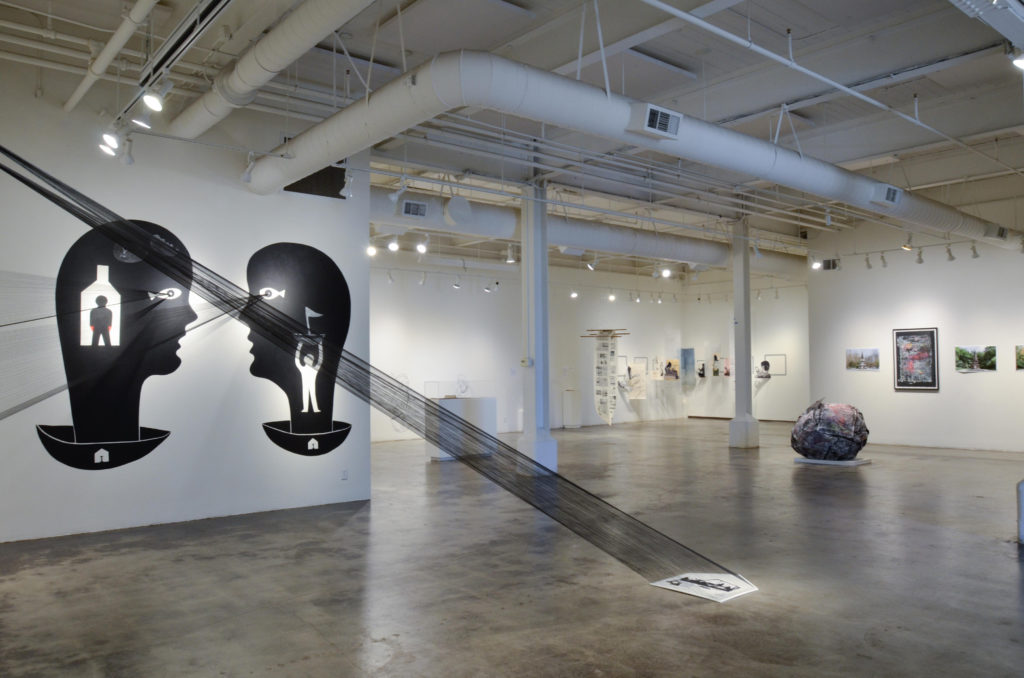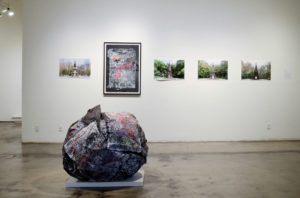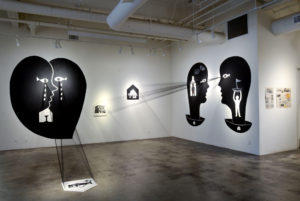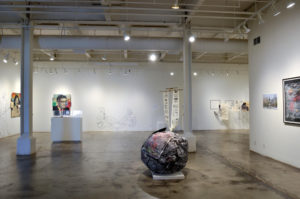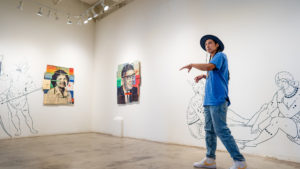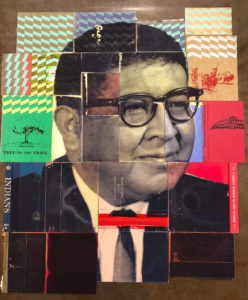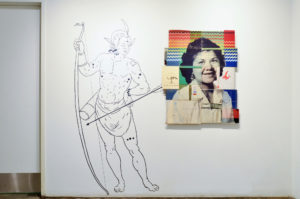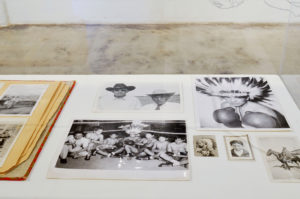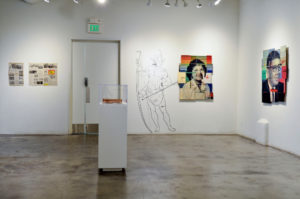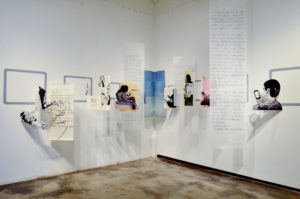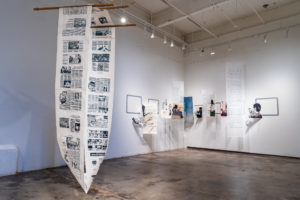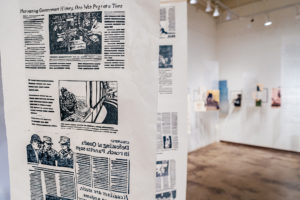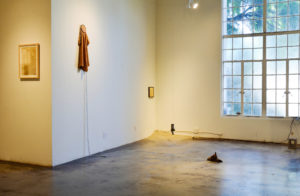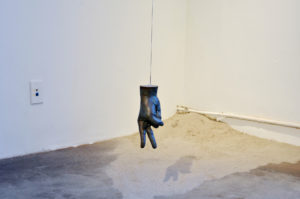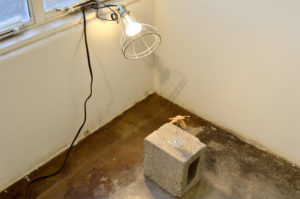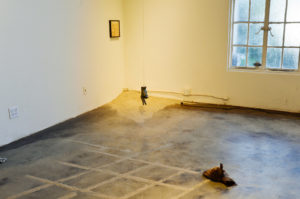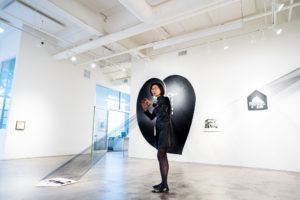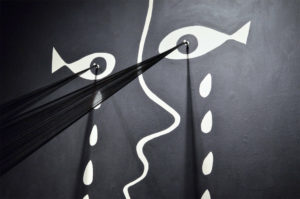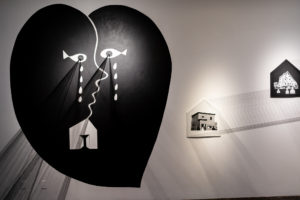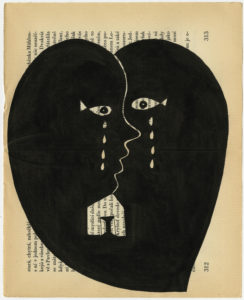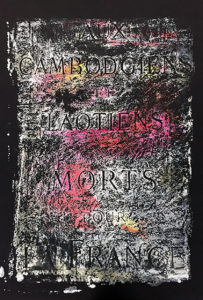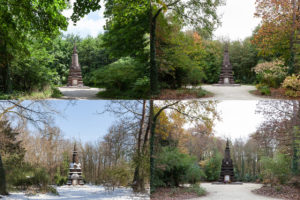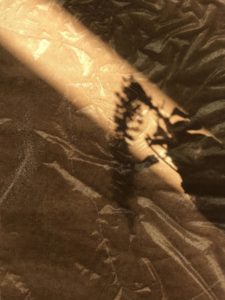Threading Pages – Residency Projects: New Work by 2018-2019 Kala Fellows
Kala Gallery is excited to present Threading Pages, featuring new work by 2018-2019 Kala Fellowship artists. The exhibition includes Dahn Gim, Malisa Humphrey, Yen-Hua Lee, Mary V Marsh, and Keith Secola. Kala Fellowships are awarded annually to a group of innovative artists working in printmaking, photography, painting/drawing, installation, video, and mixed media. Fellowship artists are selected from a competitive field of applicants from around the globe. This cohort of Fellowship artists was selected by a Kala Committee and two guest jurors: Leah Rosenberg, a fellowship alumni artist and Cecile Puretz, Access & Community Engagement Manager of The Contemporary Jewish Museum.
Our present moment stands on the strata of the past. In the passage of time, layers are woven together creating new meanings and a hybrid culture of the present. In the same passage of time, some histories have become forgotten and invisible and in danger of being eradicated. If we look deeper, we still find many knots that we can tie or untie to highlight these forgotten stories, create new pages, and even start multiple new chapters.
Artists in Threading Pages explore ways to reveal personal narratives connecting to elements from historical and personal events. The stories told in the exhibition range from a tale about hybridized culture and objecthood to explorations of the idea of home and belonging, the experience of reading books and processing information systems, and thoughts about the remains of colonization and hopes for the current passage to decolonization.
Dahn Gim’s work explores hybridity both in concept and materials. Living abroad as a foreigner since age ten, she finds herself vacillating between the familiar and the unfamiliar. Gim is currently delving into the exploration of cultivated biological raw materials such as agar, yeast, and bacteria by synthesizing them with natural or human artifacts such as sand, tar, or plastics. By blurring the line between natural and synthetic, Gim’s work collapses the distance between fiction and research and offers a way to understand and experience alternative objecthood.
Over the past two years, Malisa Humphrey has been researching the ruins of the French Colonial Expositions in Paris. Her project Time is the Concept of the Thing depicts the remains of the Indochina Pavilion from the 1907 Exposition, which hosted a living ethnographic exhibition often referred to as a “human zoo.” Her project examines the presence of the colonial legacy still presents in Paris, its potential obsolescence and the cyclical nature of political ideology. Humphrey’s work also draws comparisons to the debate that has erupted in the United States regarding Confederate memorials in recent years.
Using simple and playful black and white paintings and drawings, Yen-Hua Lee investigates ideas of home, human memories and the passing of time. Lee paints on book pages playing with text on the page and searching for remnants of human memories documented on paper and lost over the passage of time. Yen-hua’s installation explores memories of home both real and imagined, with threads and nails connecting plane to plane. This site-specific installation invites viewers to enter her home and to reimagine their own experience and ideas of home.
Mary V Marsh’s work explores the experience of reading; how we perceive information through changing formats, and how our brains store and access ideas and experiences. TransitStory, an installation of linoleum-cut prints illustrates people on their daily commute reading books on various devices. Prints hang in layers to create a space like the inside of a bus or train car – inviting the audience into a crowd of commuters who are experiencing private journeys through reading on a shared ride with strangers. Vertical Scroll : Unorientable, a seond installation, is a scroll of newspaper articles formed into a möbius strip. With no beginning or end, and with only one side, it demonstrates the challenging realm of orienting oneself in the midst of digital reading.
Keith Secola’s residency project explores Native American identity by overlaying the images from two archival photo albums representing his family and Ute Indian Heritage onto collaged and deconstructed American history books. Secola blends printmaking, archival photography, illustrations, and murals depicting Native American life. For this exhibition, Secola creates an immersive installation combining collage pieces and hand painted graphic murals using illustrations from euro-centric Native American stories near the 1492 contact period. His work highlights the differences between real identities of indigenous people and widely circulated fantastical images.

